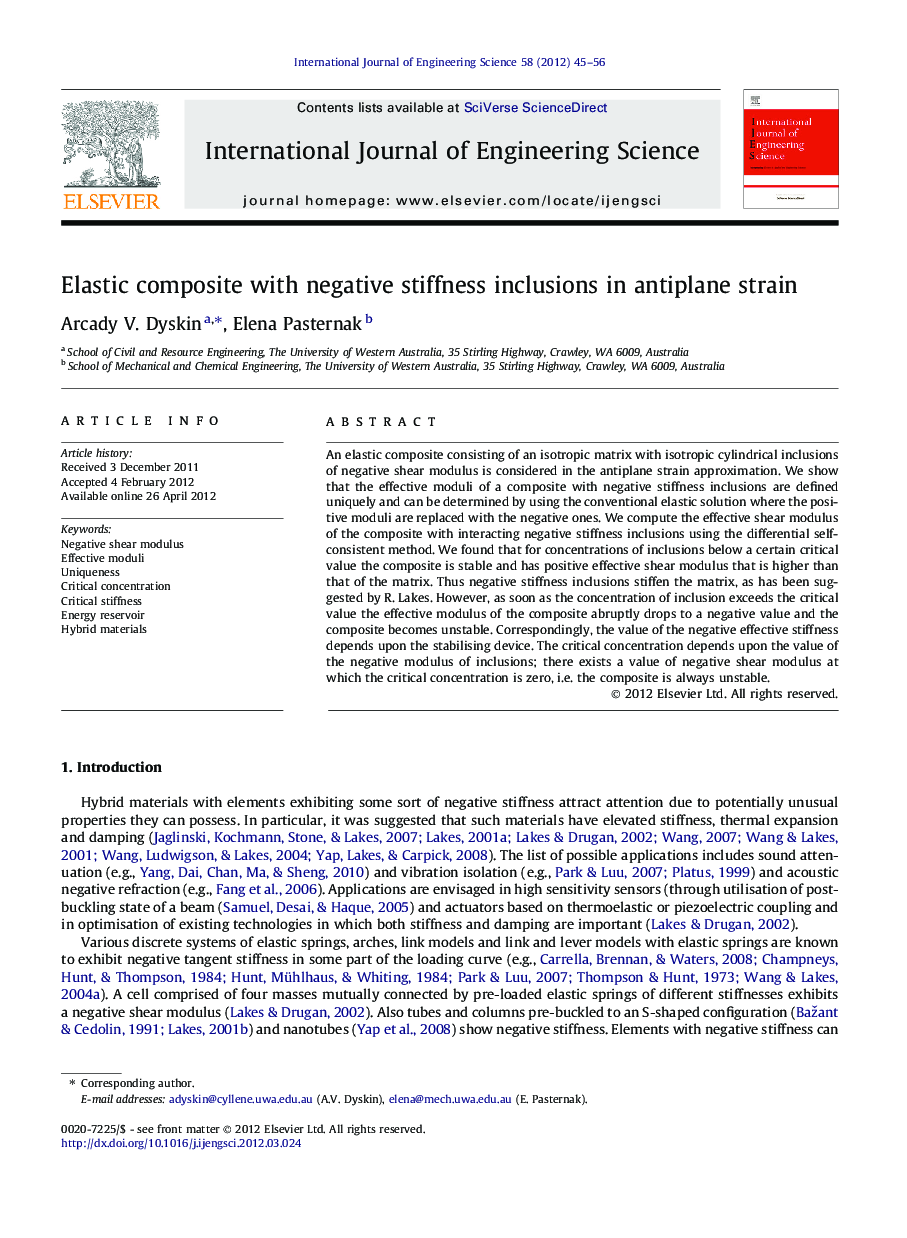| Article ID | Journal | Published Year | Pages | File Type |
|---|---|---|---|---|
| 825111 | International Journal of Engineering Science | 2012 | 12 Pages |
An elastic composite consisting of an isotropic matrix with isotropic cylindrical inclusions of negative shear modulus is considered in the antiplane strain approximation. We show that the effective moduli of a composite with negative stiffness inclusions are defined uniquely and can be determined by using the conventional elastic solution where the positive moduli are replaced with the negative ones. We compute the effective shear modulus of the composite with interacting negative stiffness inclusions using the differential self-consistent method. We found that for concentrations of inclusions below a certain critical value the composite is stable and has positive effective shear modulus that is higher than that of the matrix. Thus negative stiffness inclusions stiffen the matrix, as has been suggested by R. Lakes. However, as soon as the concentration of inclusion exceeds the critical value the effective modulus of the composite abruptly drops to a negative value and the composite becomes unstable. Correspondingly, the value of the negative effective stiffness depends upon the stabilising device. The critical concentration depends upon the value of the negative modulus of inclusions; there exists a value of negative shear modulus at which the critical concentration is zero, i.e. the composite is always unstable.
